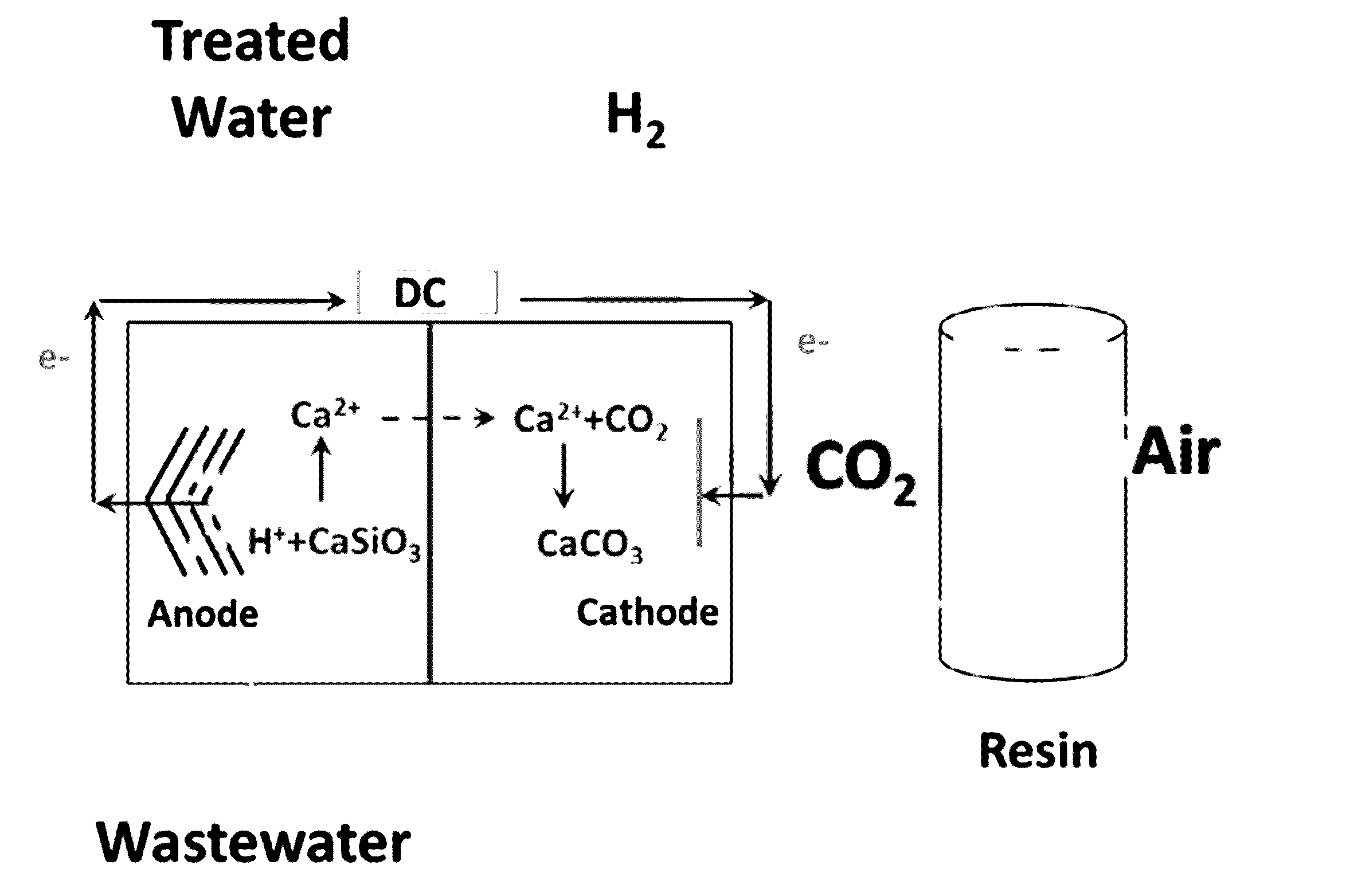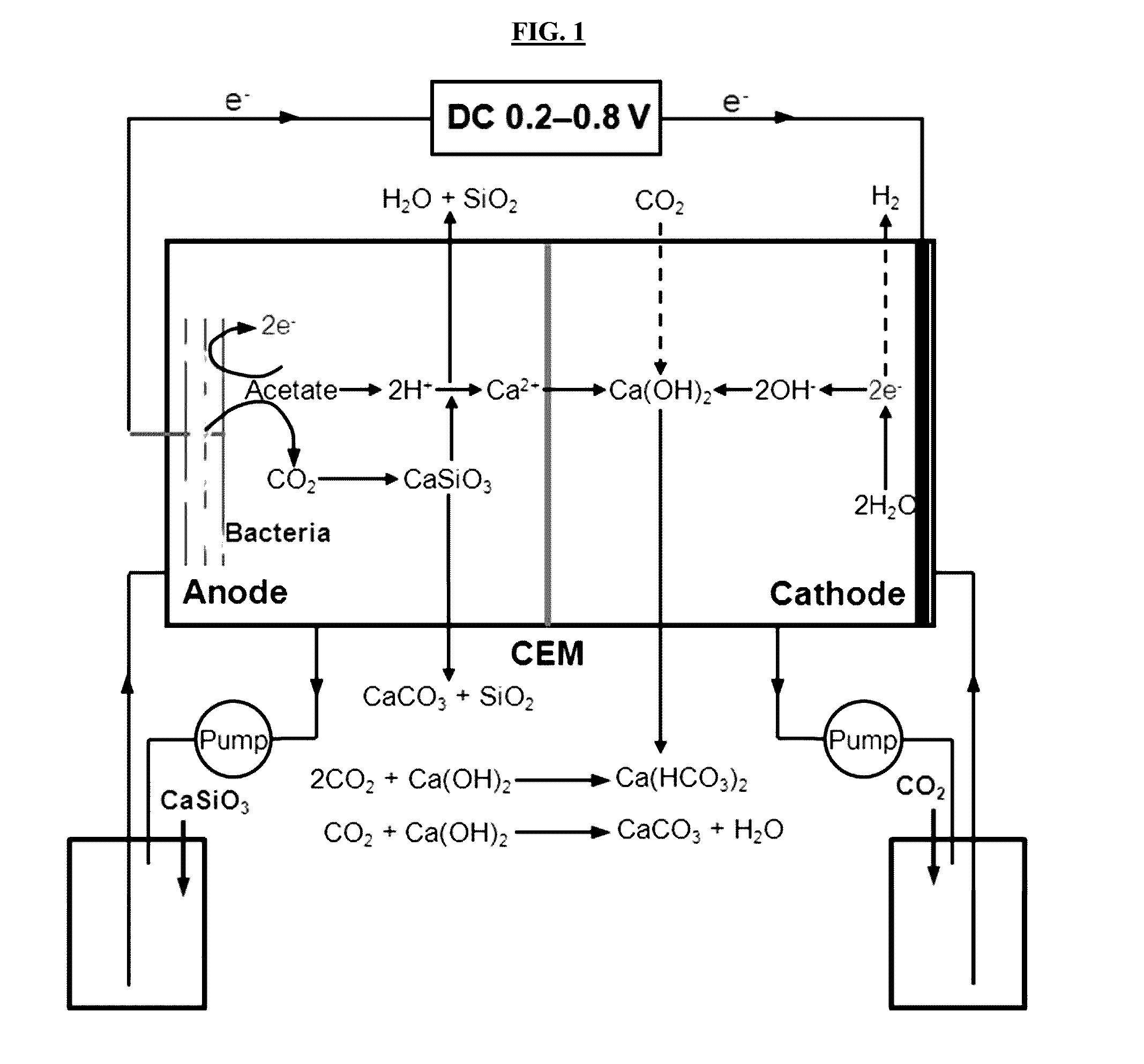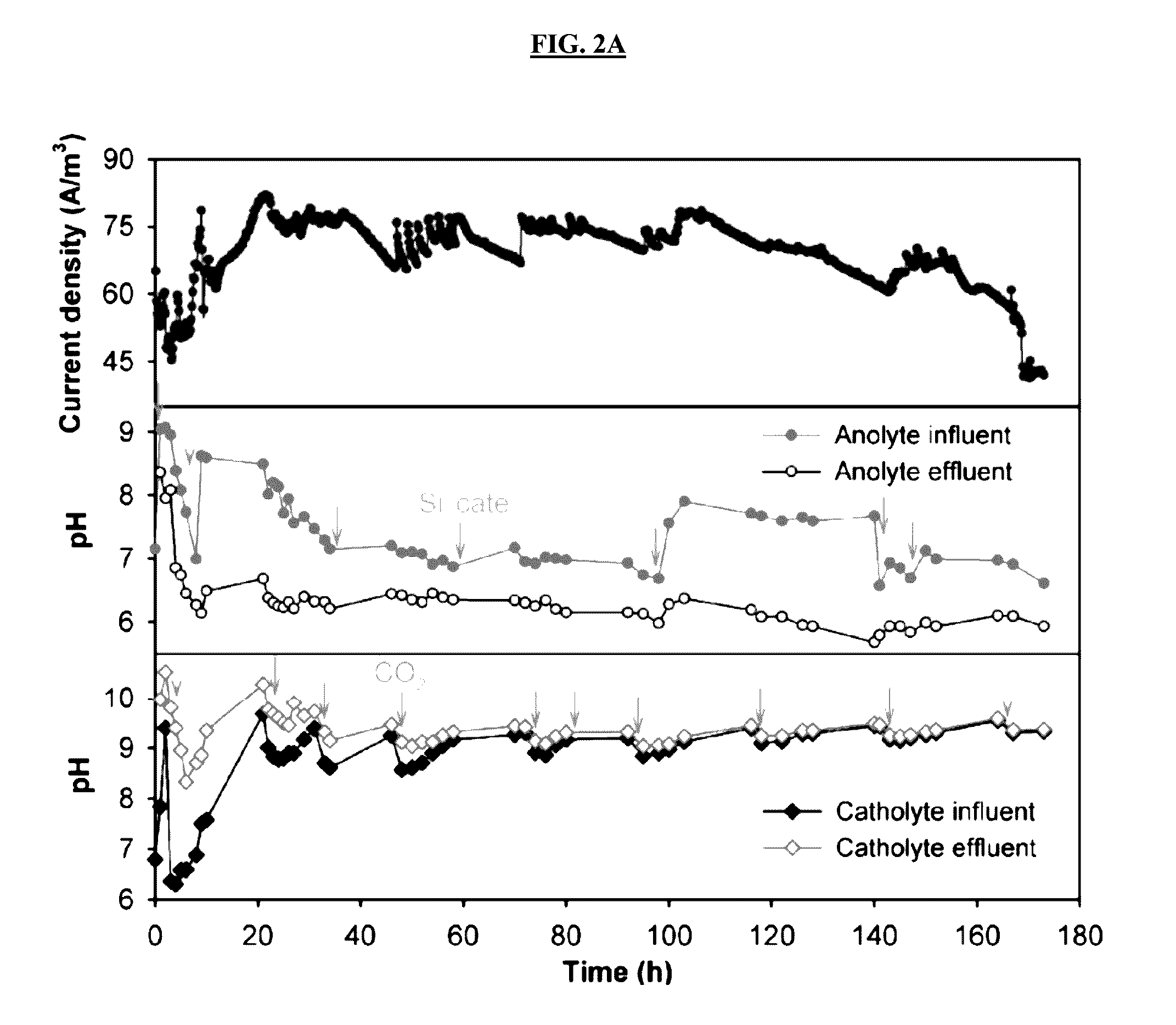Carbon dioxide capture and storage electrolytic methods
a technology of carbon dioxide and electrolysis, which is applied in the direction of diaphragms, separation processes, energy-based wastewater treatment, etc., can solve the problems of reducing only fossil fuel consumption and its associated carbon emission, reducing current treatment process energy intensive, and greenhouse gas (ghg)
- Summary
- Abstract
- Description
- Claims
- Application Information
AI Technical Summary
Benefits of technology
Problems solved by technology
Method used
Image
Examples
example 1
Current Production and Buffer Capacity Formation (MECC Reactor 1)
[0097]MECC reactors constructed according to MECC reactor construction 1 were operated in continuous-flow mode using both AW and PW. Despite a similar COD provided in both reactors, the maximum current generated from PW reached to 130 A / m3, which was 58% higher than the peak current from AW (FIGS. 2A-2C). Without wishing to be limited by any theory, this may be at least partially explained by the more than doubled conductivity of PW over the synthetic media. The current gradually dropped in the PW reactor, suggesting recalcitrant substrates in raw produced water inhibited the continued biodegradation. This is supported by the COD removal results: compared with nearly 100% COD removal in the AW, the COD removal in the PW was around 56%. Because a similar COD concentration was needed to perform the study, no produced water only control was performed. However, the same raw produced water was treated using a microbial capa...
example 2
Carbon Capture Mechanism and Carbon Balance (MECC Reactor 1)
[0100]Compared with the abiotic control without applied voltage, a significant increase in Ca2+ concentration (from non-detectable to 497.0 mg / L) and Si content (from non-detectable to 112.5 mg / L) was observed in the anolyte of active MECC reactors, indicating microbially facilitated silicate dissolution from the paper support liberated cations for electrolytic reactions (Table 1). Meanwhile, the turbidity of catholytes increased due to the formation of white suspended solid in the liquid, and white precipitate accumulated on the wall and membrane surface facing the cathode (FIGS. 4A-4C). Both were identified as polymorphous CaCO3 by XRD quantitative crystalline phase analyses (Table 2). These results confirm that CO2 was captured and stored in MECCs in part by forming insoluble carbonate through the reaction with the cations derived from the silicate. Such direct precipitation of carbonate was not observed in a previous ab...
example 3
H2 Production and Energy Balance (MECC Reactor 1)
[0105]Continuous H2 was produced in the active reactors using either AW or PW electrolyte. High coulombic efficiencies (80-82%) for both electrolytes indicated that the majority of organic substrates were converted to current, which then was used to reduce H+ for H2 production with extremely high efficiencies with the cathodic H2 recovery ranged from 91-95% (Table 4). All of these lead to a high recovery of H2 yield (75-76%) of the theoretical maximum value. A higher H2 production rate was observed from the PW MECC due to the higher current density obtained from the reactor. No H2 was found in abiotic controls even with a same applied 325 voltage of 0.8 V.
[0106]Table 4 shows the preliminary energy balance of the MECC systems. The reactors consumed between 72-84 kJ of electrical energy for each mole CO2 captured (excluding pumping energy), which is a significant reduction compared with CCS-type systems. The energy savings was due to en...
PUM
| Property | Measurement | Unit |
|---|---|---|
| Fraction | aaaaa | aaaaa |
| Electric potential / voltage | aaaaa | aaaaa |
| Electric potential / voltage | aaaaa | aaaaa |
Abstract
Description
Claims
Application Information
 Login to View More
Login to View More - R&D
- Intellectual Property
- Life Sciences
- Materials
- Tech Scout
- Unparalleled Data Quality
- Higher Quality Content
- 60% Fewer Hallucinations
Browse by: Latest US Patents, China's latest patents, Technical Efficacy Thesaurus, Application Domain, Technology Topic, Popular Technical Reports.
© 2025 PatSnap. All rights reserved.Legal|Privacy policy|Modern Slavery Act Transparency Statement|Sitemap|About US| Contact US: help@patsnap.com



